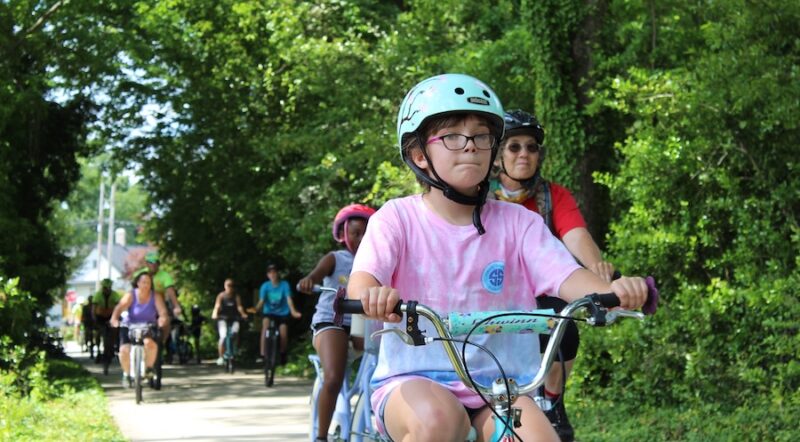Richmond Industrial Trail Will Transform Neighborhoods and Lives in North Philadelphia
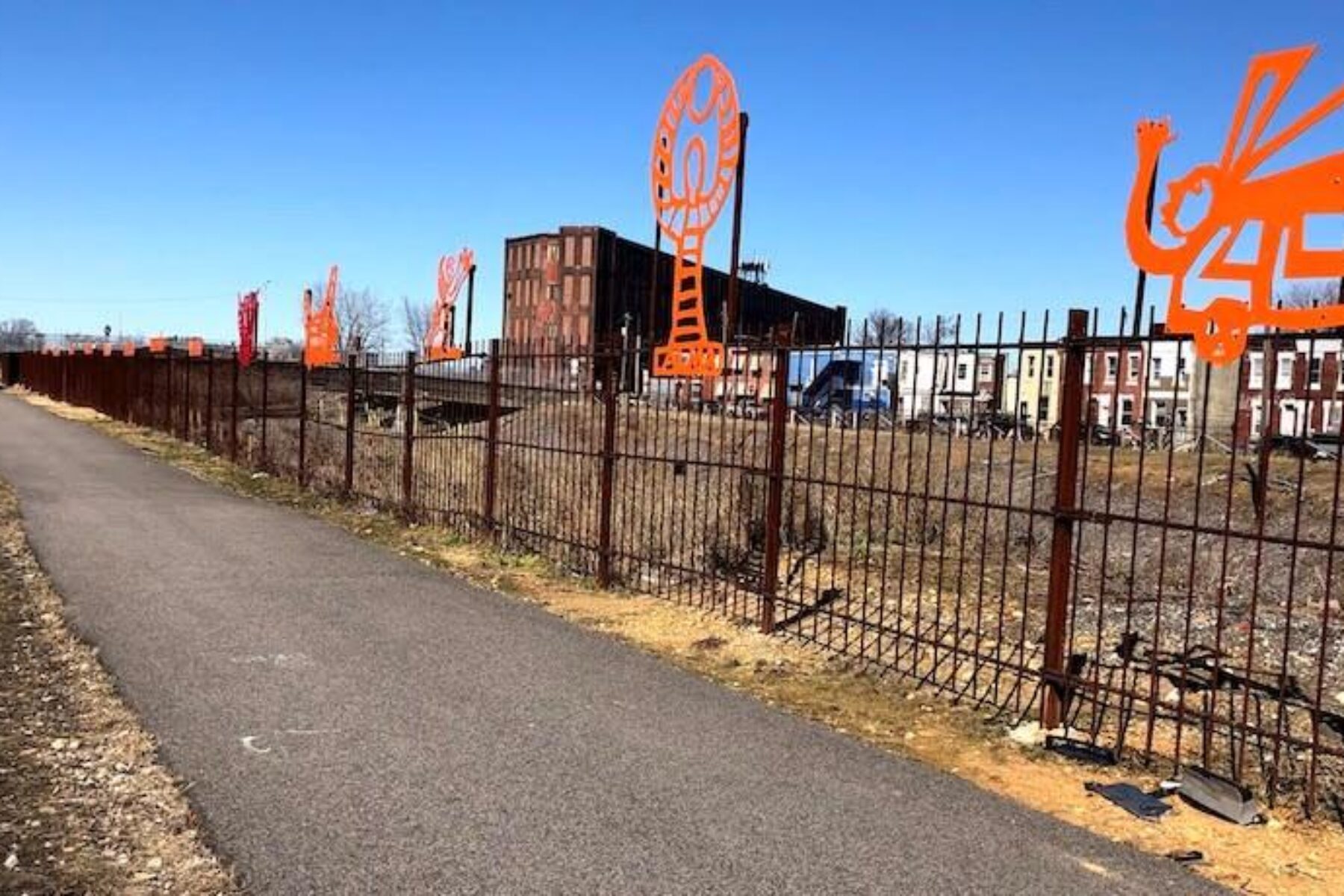
A vision for a 1.9-mile walking and biking greenway is taking shape along the Richmond Industrial Track—a railroad corridor in North Philadelphia that has seen decline in recent decades, but is undergoing renewal. The developing multiuse path—aptly named the Richmond Industrial Trail—is a first-of-its-kind project in the area that will connect five communities—including Kensington, East Kensington, Fairhill, Olde Richmond and Port Richmond—and serve more than 40,000 residents living within a half-mile of the corridor. Focused community-driven efforts to build the trail will improve the local economy and benefit public health and safety, while linking residents to green space, public transportation options, anchor institutions, main trail arteries and multiple emerging community development projects.
“Through this project, thousands of people are getting access to new options for travel and exercise, as well as all that the Delaware River waterfront has to offer,” said Anya Saretzky, trails manager for Rails-to-Trails Conservancy’s (RTC’s) Northeast Region, who is working closely with local partners to make the Richmond Industrial Trail a reality. “The route will be a major attraction for visitors from all over Philly—and provide further connections to other major trail networks, including the East Coast Greenway and the Circuit Trails.”
RELATED: Richmond Industrial Trail Feasibility Study
New Life for an Old Relic
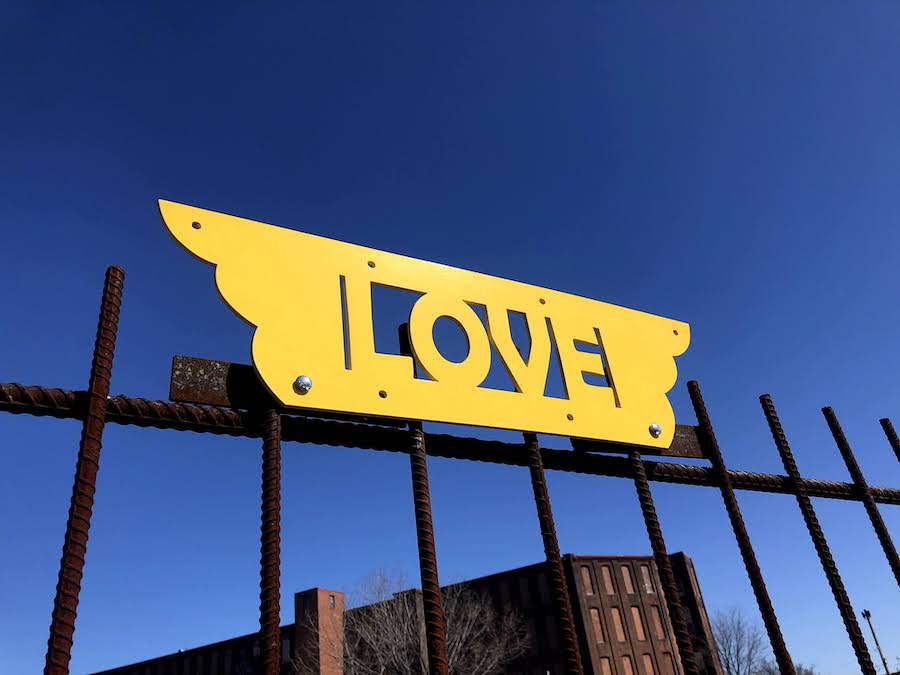
Once the most active freight line in the city, the Richmond Industrial Track was key in supporting the region’s economic growth from the late 1800s to the mid-1900s. During that time, coal that came from other regions of Pennsylvania was transported by trains to the Delaware River, where it was loaded onto barges and sent all over the world. When many of the local industries, including coal, fell into decline, the surrounding neighborhoods were hit hard, bringing dumping, drug use and crime to disinvested communities.
“Philadelphia is a very old industrial city, and the viaduct is this cool relic that has existed for almost 150 years. It has this very important history—but for decades it’s just been sitting there, existing, and not doing anything positive for anyone,” said Andy Garcia, board member for the East Kensington Neighbors Association, which is playing an active role in the trail project. “It can’t be ignored any longer. It’s time for it to have some new life. The corridor would be a big benefit to most everyone that lives around it if it were reconfigured into something that was usable.”
A high wall along the viaduct cuts through the neighborhoods, said Garcia, creating a significant physical divide between the North and South neighborhoods and rendering many areas along the path unsafe. The lack of sidewalks, bike lanes and greenspaces along the corridor currently make walking and bicycling hazardous in the area as well. The Richmond Industrial Trail—whose planned route stretches from the elevated Lehigh Viaduct in Fairhill to the Port Richmond rail yard along the Delaware River—would be transformative, providing new safe ways to explore the community by bike, foot or wheelchair.
“Between the viaduct and the road, so many areas in this part of the city are disconnected. It’s silly—you feel like you have to get in a car or call an Uber to go for what would be a 10-minute walk because you don’t feel comfortable,” said Garcia.
In addition to bringing more safety and connectivity to the area, the health benefits the trail could bring to the neighborhood are significant. The rail-with-trail would allow for low-cost or no-cost opportunities for exercise in an area where the rate of obesity is 37% and 40% of residents do not exercise, according to the Centers for Disease Control and Prevention. These rates are 6% and 10% higher than the city averages, respectively, and 8% and 14% higher than national rates. Data shows that having a trail close to home increases the physical activity of residents by 22%.
A Community-Led Trail Transformation
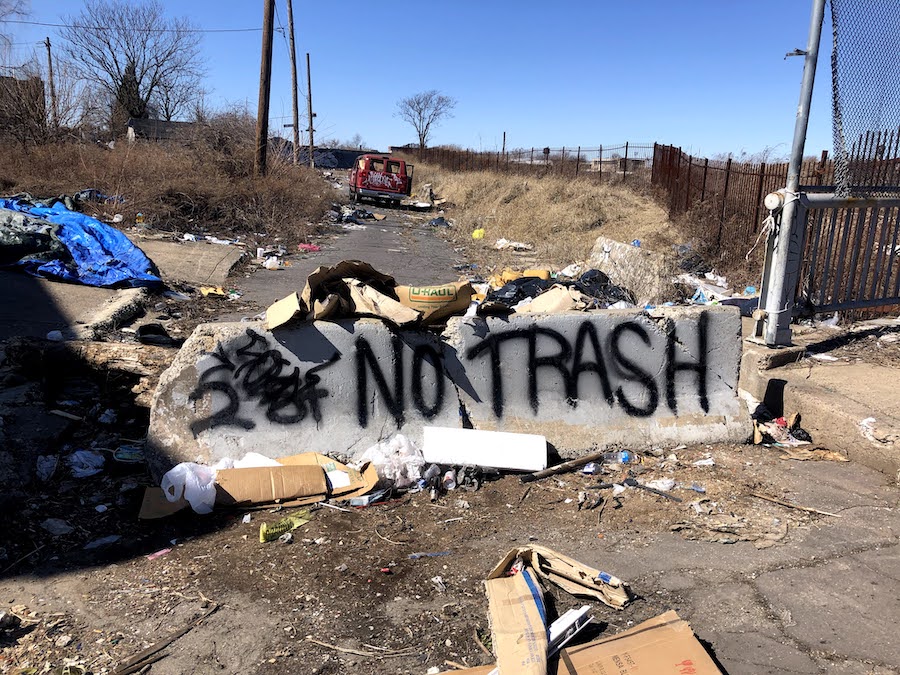
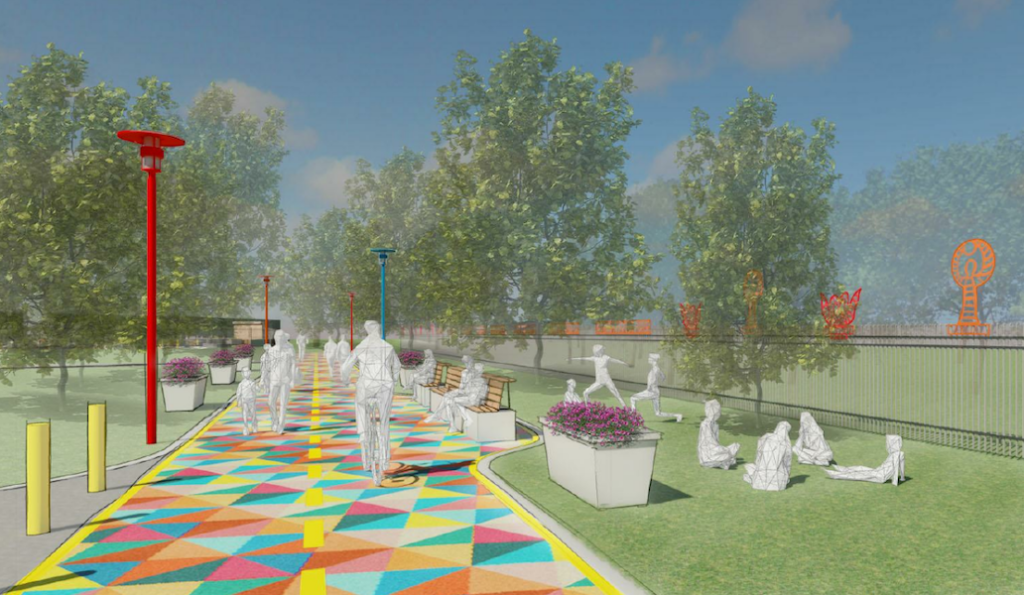
For the past four years, the communities neighboring the rail-with-trail have come together to work to convert the area into a safe, artful space that brings hope and a sense of local pride to the area. A 2017 multimillion-dollar cleanup effort implemented by Conrail, the City of Philadelphia and local organizations, including Hispanic Association Contractor Enterprises (HACE), helped stabilize the area and opened the door for trail development to become a transformative factor in the creation of neighborhood improvement efforts, blight remediation and public health goals.
In 2018, HACE acquired land from Conrail and moved quickly to build a one-block Gurney Street trail pilot that was completed with input from residents and art from local Latino artists.
“We were able to achieve that dream that we thought we would never see—to actually have that trail and viaduct cleaned up,” said Harry Tapia, director of operations at HACE. “We decided we needed to hurry up and show the community that we could turn this blighted area into a nice, cleaned-up place.”
He continued, “We built the first part of the trail guerilla style to show the community that their space is beautiful, that it can be used for recreation. We also moved quickly to make sure that it didn’t revert back to the same functions as when it was used for prostitution, drugs, crime, dumping—all that. That’s really what started [it all]. Since then, it has grown into a project that will connect all the way to the region’s other major trail networks—to the city.”
For every neighborhood project, HACE works directly with the local residents to develop plans for their specific communities. Through their Livability Academy, HACE provides a training opportunity and leadership incubator for community members to build skills, knowledge and relationships as they work to improve their neighborhoods. Residents and stakeholders design and implement innovative solutions to quality-of-life issues, drawing on their own expertise in their neighborhoods. For the trail projects, the residents are working closely with architects, artists, developers and criminologists to make sure the projects meet the needs of the community.
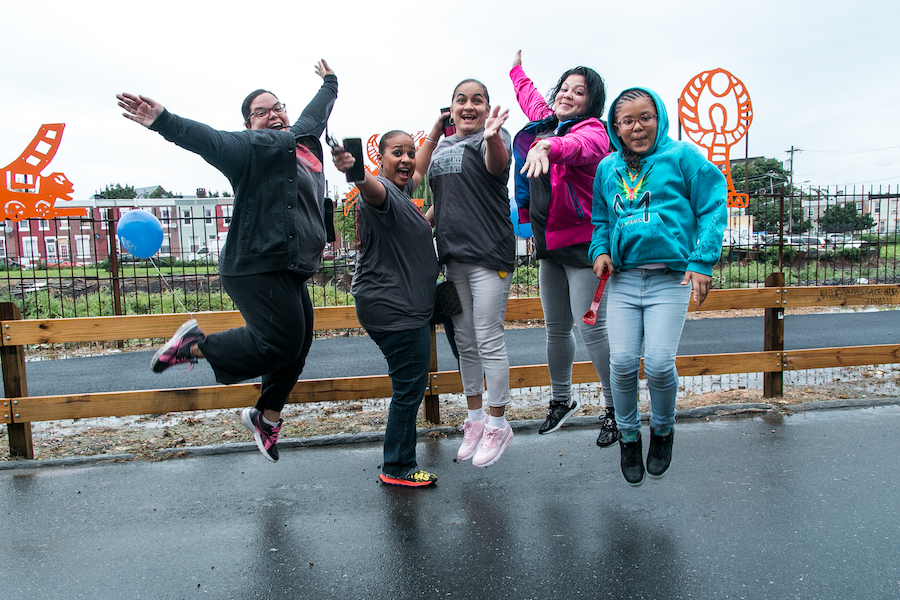
“It takes a village to do this work. We can’t do it in a vacuum,” said Maria Gonzalez, executive director of HACE. “That’s why for us, it’s important to make sure that we build leadership at the resident level, because ultimately, they have to work with us to maintain the spaces—and to occupy the spaces so they’re used for the benefit of the community. That’s important.”
The next big project on the horizon for HACE is the one-acre Trail Park in a former rail yard that will serve as a trailhead for the Richmond Industrial Trail and bring entertainment, food and economic opportunities to residents. Construction will take place throughout 2021. The space will include carts featuring a variety of Hispanic foods; an open recreational space with two jungle gyms; an amphitheater for movies, plays and concerts; and a wide array of programming and activities for people of all ages.
“The economic development initiatives that we have planned for the food service component of it are very important, especially during the pandemic,” said Gonzalez. “We want to be able to provide spaces and opportunities for community members that lost their business because of COVID, as well as for people who are unemployed or underemployed. In a community that has a poverty level of about 57%, it’s really critically important for us to be able to create those opportunities.”
Exciting Days Ahead
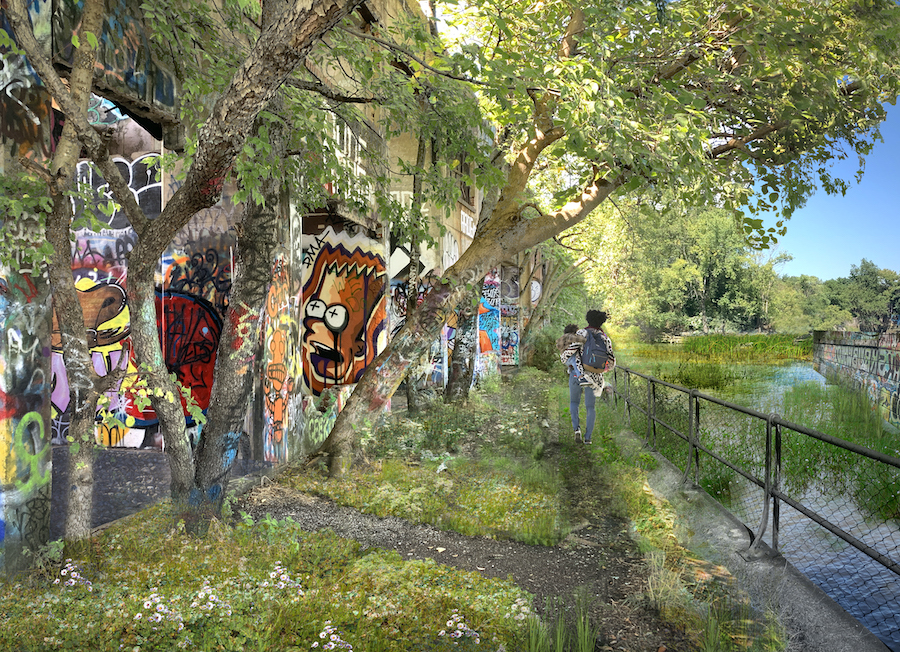
As the momentum builds around the trail, more and more creative, community-led projects are developing in neighborhoods adjacent to the corridor. Many of these neighborhood-led initiatives are aimed at promoting the local area as well as making it easier to bike, walk and play. In their initial design phases, these projects and investments will create incredible destinations that will be linked together by the future rail-trail.
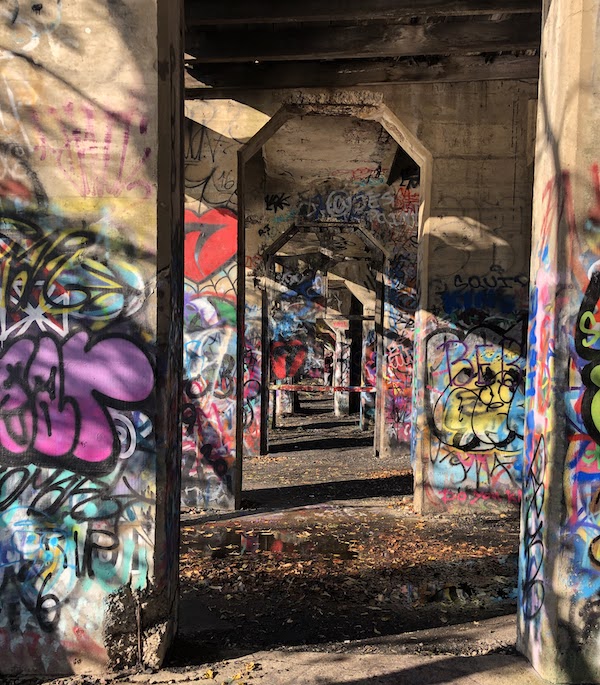
For example, Saretzky mentions efforts by the Delaware River Waterfront Corporation (DRWC)—a prominent project partner on the eastern end of the trail—to make refinements to Graffiti Pier, a former coal pier that has unofficially been used as a park and open-air art gallery for graffiti artists for years.
“Through this exciting project, DRWC will legitimize the space in an inclusive way—respecting the fact that people already care about and are using the space,” said Saretzky, adding that the goal is to keep the pier as similar to the current conditions as possible, while upgrading it for safety considerations.
Once completed, the Richmond Industrial Trail has the potential to connect to multiple larger trail networks, including the Circuit Trails, a regional system that will eventually encompass 800 miles of trails in Greater Philadelphia and Camden, New Jersey. The project—which is building upon the region’s existing active-transportation infrastructure—will ultimately connecting millions of people to jobs, green space and major destinations on both sides of the Delaware River.
Not bad for a 1.9-mile trail!
For Saretzky, the potential impact of the project, locally and regionally, is energizing. “It’s inspiring to see the communities across the corridor working together to make the powerful vision for this trail into a reality,” she said.

Donate
Everyone deserves access to safe ways to walk, bike, and be active outdoors.



